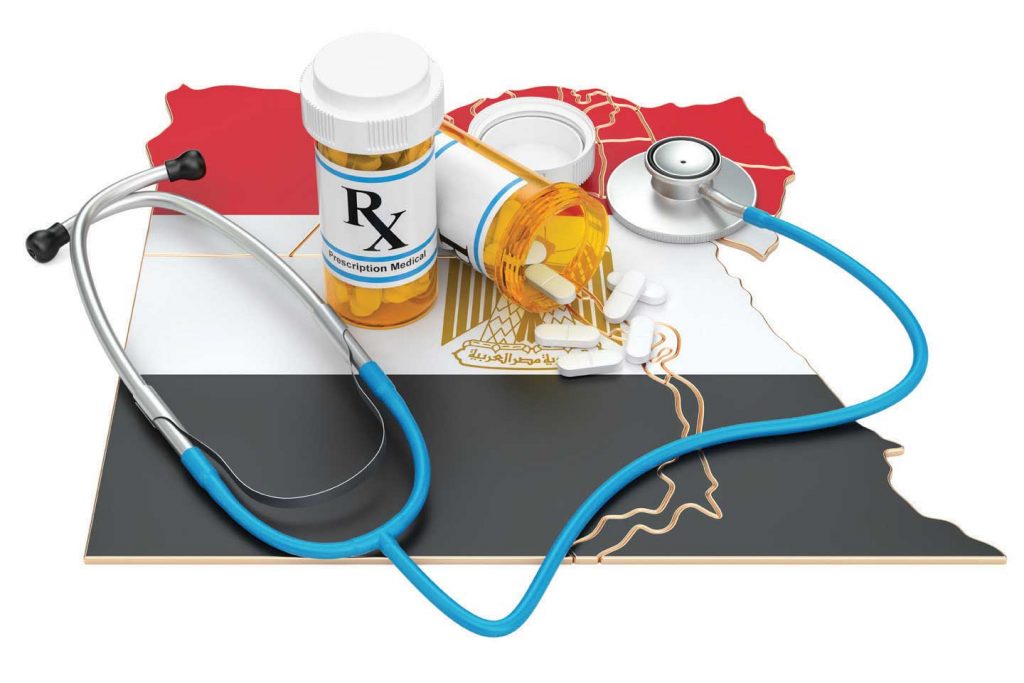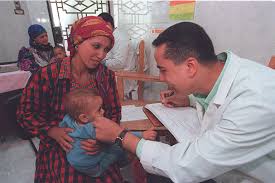
At a little over 102 million people Egypt is the 3rd most populous country in Africa. Overcrowding in urban spaces, with around 95% of the population living on about 4% of the land, has aggravated pollution and traffic while placing a strain on resources, like clean drinking water. In 2019, the poverty rate was about 32% and unemployment has increased the need for affordable, accessible and quality healthcare. There are many challenges facing the healthcare system in Egypt.
The system faces not only the burden of combating illnesses associated with poverty and lack of education, but it must also deal with emerging diseases and illnesses associated with urban living. A high birth rate combined with a longer life expectancy is increasing the population pressure on the Egyptian health system. Around two-thirds of the population is under 29. In recent years, these concerns have led to the implementation of measures to reform Egypt’s underfunded public healthcare system.
Healthcare in Egypt consists of both a public and a private sector. For a few decades, the government has had a subsidized healthcare system that is meant to help provide healthcare for those who can’t afford it. The system relies on four distinct financial agents, including the government and the public sector as well as private organizations and out-of-pocket payments made by individuals. Due to its pluralistic nature, healthcare providers from the various sectors compete. Therefore, patients have the liberty of choosing their doctor on the basis of their financial abilities.

In 2018, the Universal Health Insurance Law emerged to restructure the healthcare system by providing universal health coverage and making healthcare services affordable to all citizens. In June 2020, The World Bank announced $400 million in support of the implementation of the Universal Health Insurance System. The phased plan of this law should be complete by 2032. It requires mandatory enrollment by all citizens in the country, with vulnerable groups receiving subsidization from the government. This law helps with the nation’s focus on better prenatal and early childhood care. Currently the Ministry of Healthcare and Population provides family medicine through primary health care units that cover almost every neighborhood and village in the country. They deliver acute and chronic illness care, vaccinations, contraceptive services, and antenatal care. However, most people obtain primary care from the outpatient clinics of public hospitals.
The largest public healthcare programs are the Health Insurance Organization (HIO) and the Curative Care Organization (CCO). HIO covers about 60% of the population, and provides basic coverage to employees, students, and widows through their own hospitals and clinics. CCO contracts with individuals and companies to provide inpatient and outpatient care that was developed through the privatization of Egypt’s healthcare providers over the last couple of decades. Although the public system provides basic universal coverage, it is plagued by chronic underfunding, low service quality, and high out-of-pocket payments.
Private healthcare facilities consist of nonprofit organizations and for-profit hospitals, clinics and pharmacies. With increased privatization and better-quality healthcare, these facilities account for the majority portion of services that Egypt provides. People mostly have to pay expenses out-of-pocket and accessible only to people who can afford it. The private healthcare sector is highly fragmented, with the fewest number of beds in comparison to government and public/parastatal facilities. The many reforms Egypt has made to its healthcare system has increased life expectancy and severely reduced the maternal mortality rate. However, there is still a way to go as far as quality and access are concerned.
